SharpCell selects Wedge to ensure consistent quality

Finland-based SharpCell is one of the newest airlaid manufacturers in the world. They take pride in their consistent quality and reliable delivery of airlaid products for wiping, hygiene and personal care products, table top applications, household cleaning applications, baby care, and feminine hygiene.
To ensure consistent quality and trouble-free production processes, they have chosen Wedge for analyzing their process data. With Wedge, all process data can be utilized fast and easily to ensure zero waste, zero emissions, and minimal use of resources at all times.
“Wedge is a powerful piece of data mining software and a useful tool for understanding our production process on a more detailed level. The visualizing process and quality data help us widen our understanding of the current status of where we are on all organizational levels. Wedge is also a great asset in troubleshooting, and a tool for minimizing process variance. All this is supporting us in our main target, which is to be quality leaders in the airlaid segment.” says Production manager Eero Ollila, SharpCell.
5 practical ways to optimize your maintenance operations

The cornerstone of modern maintenance may be predictive maintenance, but preventive maintenance is still very much in use, especially in industries where errors can be fatal. Whichever approach is used, data plays an essential part. Better use of data results in organisations being able to determine the state of the process and condition of equipment in order to estimate when maintenance should be performed. The goal? Fix potential defects before they result in failure or effect on process performance.
On-time maintenance is made possible by the integration of data utilization capabilities. At the end of the day, successful implementation is dependent not only on the organisation’s ability to turn data into accurate information, but also to further leverage the information to implement an efficient, scalable maintenance plan. Below are some tips, tricks and first-hand examples of how you can implement new data-driven strategies to enhance productivity, profitability and efficiency gains.
Leverage modern data analytics tools
Modern software tools can help you and your team analyze available data and translate it into accurate information that will help improve operations. They combine online data from various sources, including maintenance, condition monitoring, process control (DCS) and quality control (QCS) systems, to enable efficient data analysis. The data utilization can be visual, smooth and powerful, leading to enhanced production and easier maintenance development.
For companies pointed in this direction, the best case scenario is that all digital information is seamlessly integrated and users have a clear, overall picture of the process as a basis for better decision-making.
Five practical examples of data-driven maintenance
As you review these examples, keep in mind that the opportunities are limitless when high-quality data is combined with intelligent calculations and algorithms. For example, it is possible to estimate optimal maintenance timings, calculate sub-process performances or assess runnability risks.
#1: Begin with an equipment-level view
Often, when assessing the need for maintenance, it is worth going back to basics and begin by visualizing the data. Take a pump, for example. Collect and monitor the most critical measurements regarding the equipment’s operating condition (speed, current, vibration, temperature, etc.). Learn from that if the equipment behavior is normal.

#2: Start recognizing patterns
Study the dynamics of the process. You may notice that the relationship between, for example, the pump’s speed and current follows a certain curve. A deviation from that should potentially lead to an action by maintenance.
#3: Implement an SPC approach
The Statistical Process Control (SPC) data processing method has proven its power in several process industry areas. SPC is often used within Six Sigma initiatives to provide a factual base for the measurement type of methodology of process improvement, whether such a process is in relation to a production process or a service process.
SPC limits are also regularly utilized by maintenance teams. Deviation from the limits should potentially trigger an event-driven maintenance action.

#4: Compare process condition changes
Process conditions such as equipment setup, process control strategy, used raw materials and required properties of the final product are constantly changing. Studying the process changes provides a great way to learn about the process. On Trimble’s Wedge, for example, this can be done with the annotations or notifications to contextualize data.
The maintenance team might want to compare process variables before and after maintenance activities such as pump or valve replacement. For example, what changed in the data when we replaced a pump, and what can we learn from that? Is it possible to use this new information to schedule the next pump change more accurately?
#5: Study control loop performance
A modern production plant has a production control system and thousands of control loops that ensure production efficiency. Control loop performance is one of the automation maintenance team’s biggest headaches because poorly functioning control loops can cause serious deviations in product quality or profitability.
In order to evaluate control loop performance, combine control loop set points, controller outputs, measurements and state data. By analyzing the averages, deviations, maximums and minimums of the factors, it is possible to determine bottlenecks, dead loops, broken measurements and deviations easily.

In the end, remember that it’s not about how much data is collected, it’s what you do with the data. While most modern production operations generate significant amounts of data, the most successful ones are leveraging it to drive the business forward.
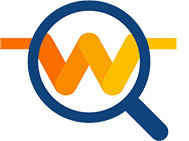 Want more insights?
Want more insights?
Our sales team is full of data analysis experts ready to help you. Learn more about Wedge process data analysis tool.
UPM expands its Wedge use to new mill in Uruguay

Forest company giant UPM has opened a new factory in Paso de los Toros, Uruguay with the capacity to produce 2.1 million tons of eucalyptus pulp annually. The mill incorporates the latest and best technology available and represents the very best in modern factories. It is energy efficient with minimal environmental impacts and optimized maintenance.
Wedge is Trimble’s process data diagnostics system that will help UPM Paso de los Toros to achieve and then maintain the highest standards of performance by enabling faster and better data-driven decision making. Trimble’s Wedge will result in reduced waste, mitigated risks and increased productivity at the new mill.
Choosing Wedge as its main tool for process diagnosis and monitoring was easy, since UPM’s first mill in Uruguay, Fray Bentos, has been using Wedge since 2019 and the results have been convincing. It is seamlessly integrated with the different systems that provide process data throughout the factory and is actively and widely used by operators, engineers, supervisors and process coordinators. UPM Fray Bentos also uses Wedge at the management level, with dashboards that summarize important steps in the process.
Let’s meet at MIAC in Italy!
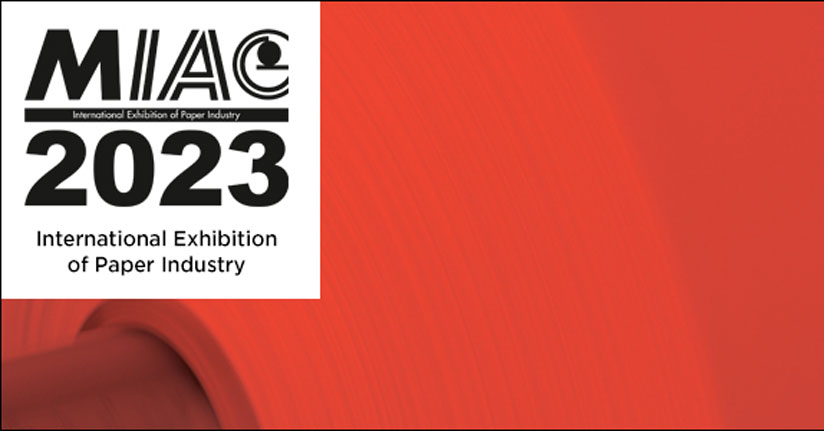
Trimble Wedge is sponsoring the MIAC 2023 which is the number one event for the paper and packaging making industry in Italy. MIAC will take place in Lucca, October 11-13, 2023.
At MIAC you can meet our process data analytics experts Jürgen Missel, Matti Häkkinen, and Teemu Möykkylä to discuss if Wedge could be the system for your process improvement.
MIAC also offers an excellent opportunity to learn from your peers. We recommend you not to miss Eugenio Ciucani’s (Holmen Iggesund Paperboard) presentation, “Online data analysis for process optimization”. The practical presentation is taking place on Friday October 13 at 11:50 at the MIAC Conference Room.
Focus on your core
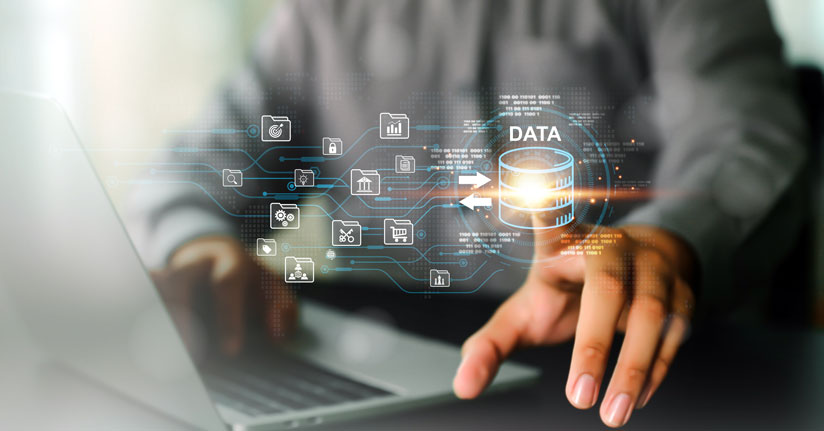
Running a complex large-scale industrial operation requires a vast amount of expertise and an equal amount of good judgment, especially when it comes to deciding which functions to fulfill in-house and those best to outsource. In the end, it is not possible to excel in every function on your own – recruiting the best talents, developing knowledge, systems and processes in every area is too great a challenge to any company. Choices must be made.
While each sector, business and company culture will vary, a reliable guiding principle to follow when considering these choices is: Focus on your core. Keep all functions that are core to your business in-house as these operational areas are vital to ensuring your organization’s competitive advantage. For example if you’re running a paper or pulp plant, don’t hand over control of any functions directly related to managing the final product. Non-core functions, however, can be considered – and, indeed, may be executed more efficiently when outsourced. Now, let’s consider some of the key questions that come up for executives as they analyze these core decisions.
How do I evaluate which functions are core to the operation?
Assuming your company has taken the strategic decision to keep manufacturing in-house, you’ve already taken the first step. You most likely have several performance indicators, like the OEE (Overall Equipment Effectiveness), in use to help track your operation’s ability to compete. As long as your R&D, process engineering and quality departments function seamlessly and in tandem in order to minimize costs, optimize the production performance, improve quality or add flexibility and agility, your company will maintain a good position. So,as a guiding principle, consider any processes and functions that have a direct impact on your key performance indicators as sacred ones, i.e. your core functions.
In terms of performance indicators, keep in mind that being in the driver’s seat will enable successful understanding, accurate measurement and your ability to effectively contribute to an efficient operation. Understanding and measuring are easy – but the latter can be more challenging as it requires serious process and quality engineering.
For example, take any continuous development framework and you will notice that the first step of the process will be intertwined with information gathering, data collection or data/process analysis. The same applies to developing performance – the process needs to be structured and data-driven right from the beginning all the way to communicating and implementing the findings. The talented and curious people in charge of that process, i.e. engineers, can be considered the soul and incarnation of your competitive edge.
How does Trimble support industrial plants in making these important decisions?
At Trimble, we work in the field of process analysis and diagnostics. We have supported many companies contemplating in-house and outsourced approaches to process and quality development. While some companies proudly maintain and develop their process knowledge in order to improve the performance, there are others that have chosen to outsource troubleshooting and process development. In our experience it is the first group with the brightest, and most sustainable, future.
The second group are essentially asset owners. This includes industrial plants that opt to outsource their efficiency development to automation and algorithms. They implement cutting-edge technology and let it take care of challenging tasks such as optimizing the process. There is some merit to this rationale, however, a system is only as good as its configuration and embedded models. Furthermore, all systems and equipment are available to everyone.
In the end, the way to make a true impact comes down to how you use and configure the best available technology. For today’s most successful operators, we have discovered that this decision should be based on protecting – in-house – those technologies, processes and proprietary intel that contains the core knowledge of running your business.
 Want more insights?
Want more insights?
Our sales team is full of data analysis experts ready to help you. Learn more about Wedge industrial data analytics tool.
Let’s meet at Digitalisation in mining Europe event in Stockholm

Did you know that Wedge also works great for the metal and mining industries? We will attend the Digitalisation in mining Europe event in Stockholm, Sweden on 29-30 August. Welcome to discuss how we can help you make better use of your process data.
Teemu Möykkylä, Matti Häkkinen and Jürgen Missel are looking forward to meeting you!
Meet us at ZELLCHEMING-Expo 2023

We would like to welcome you to join us at ZELLCHEMING-Expo in Wiesbaden, Germany June 20-22, 2023.
Zellcheming is the trade fair to learn the latest developments in the European paper, pulp, and fiber industry and the perfect platform for professional exchange between technology users and suppliers.
We invite you to take the great opportunity to meet our industrial data analytics experts Jürgen Missel, Matti Häkkinen, and Teemu Möykkylä to discuss if Wedge could be the system for your process improvement.
Don’t miss Matti Häkkinen’s presentation Combining CD-cross Profile Measurements with Process Data on Tuesday 20 June at 11.30 a.m.
Formica IKI selects Trimble Wedge for data analytics
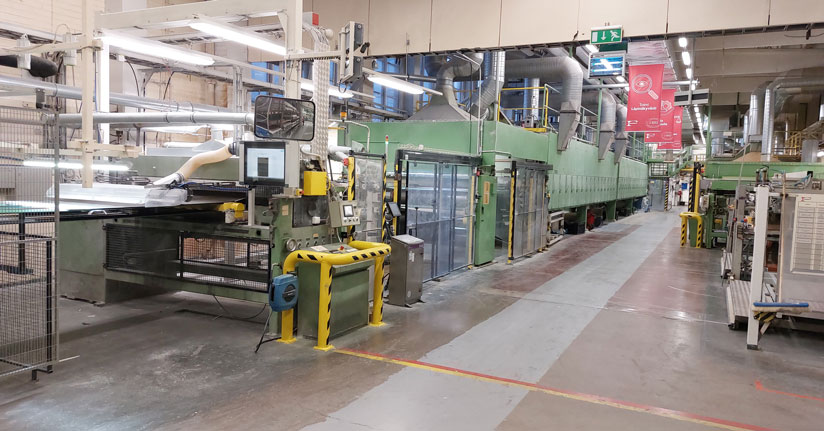
Formica Group, the world’s largest manufacturer of high-pressure laminates (HPL), selects Trimble’s industrial data analytics system Wedge to improve its Formica IKI Oy plant performance in Kolho, Finland.
“We have raised the bar on sustainability. Surrounded by a group of material technology companies, giving us access to tools and technology, we are confident we can accelerate our sustainability improvement trajectory. Major improvements have been made during the last couple of years. As part of the path toward carbon neutrality, we have invested in measuring our process performance, and with Wedge, we are able to take the most out of it in process optimization and development,” says Jani Kattilakoski, Plant Manager of Formica IKI Oy Kolho.
IKI-manufactured high pressure laminate consists of layers of wood-based fibers and usually one decorative paper on the surface. Impregnated with thermosetting resins, the papers are collated and compressed into a single, homogeneous sheet under high pressure and temperature. The resulting laminates provide a high-performance surface with excellent durability and scratch resistance but maintaining flexibility to allow the creation of curves and shaped surfaces.
Register for TAPPI webinar on October 27, 2022

We are pleased to invite you to TAPPI webinar we sponsor on Thursday, October 27, at 11 am (ET). The topic is the always interesting Data-Driven Decision Making with Process Analytics – Making sense of big data in the pulp and paper industry presented by Dr Peter Hart from WestRock. The webinar is hosted by one of our Wedge specialists, Leigh Kinne.
The event is free and does not require TAPPI membership; registration is required.
Glencore Nikkelverk selects Trimble’s Wedge for industrial data analytics
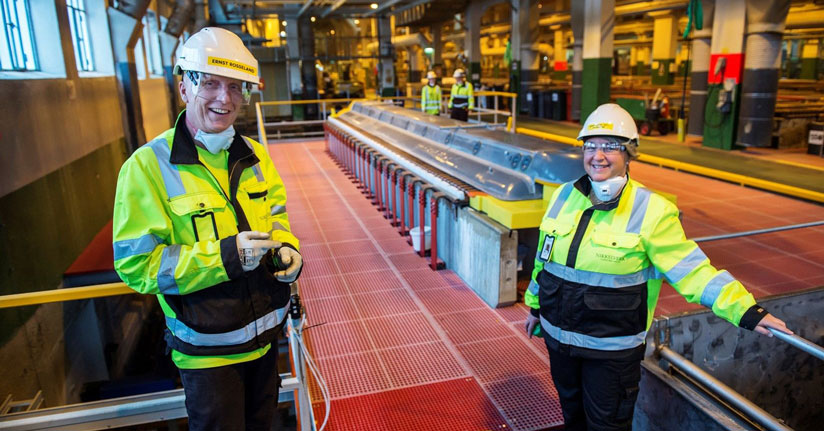
Glencore Nikkelverk, one of the largest nickel refineries in the western world, has selected Trimble’s Wedge industrial data analytics system to improve its process plant performance.
“Nikkelverk refinery has a high automation level and modern process information system and we are continuously generating a lot of valuable process data. Integrating Wedge to our plant systems opens a new era of process optimization, troubleshooting disturbances, and development. This certainly represents a great example of our ongoing digitalization efforts,” said Kai Johansen, Chief Information Officer at Glencore Nikkelverk.
Wedge is powerful data-mining software that provides users with tools to visualize process and quality data, cleanse the data, compensate for process delays, analyze data, and diagnose dependencies and root causes. Wedge can be used widely at industrial plants; from site managers to process operators.
“The Wedge system has a lot of potential for our plant’s performance improvement by making the analytics work easier. It also enables a completely different level of process data utilization with current resources. One of the gains we expect from this is decreased chemical usage per tonn Ni produced, which is good for both our economy and our environmental footprint,” said Eirik Djuve, Process Metallurgist, Glencore Nikkelverk.
With customers in over 20 countries, Glencore Nikkelverk is the first to deploy Trimble’s Wedge in Norway.